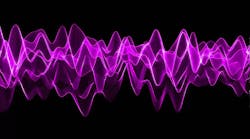RF/microwave circulators are usually passive components, typically based on ferrite substrate materials and often called upon to direct high-power signals in high-frequency systems. Some passive loss is to be expected, and usually such loss is one of the limiting factors in determining the power-handling capability of a passive circulator. But what if RF/microwave circulators were designed as active components?
Circulators allow the simultaneous transmission and reception of high-frequency signals at different frequencies, a key capability in enabling the high-volume use of radio waves in a growing number of wireless communications applications, including in 5G wireless cellular networks. Researchers from Hong Kong have investigated the development of active circulators that will allow the flow of RF/microwave energy only in one direction in support of many different wireless radio architectures, including in software-defined-radio (SDR) systems for coverage of many different frequency bands with a single radio.
The researchers examined different active circulator design approaches, including three-way circulators in which signals flow from an input port to two output ports and quasi-circulators, where signals flow from an input port to one of two output ports but are isolated from the other port, as required when connecting an antenna to a transmitter and receiver. Much attention is given to active quasi-circulator designs, along with several wideband and tunable circuit configurations. A combined wideband tunable quasi-circulator was developed that provides high isolation between ports while also operating over a large bandwidth.
Each active circulator design approach had strengths and weaknesses, with the most wideband configurations lacking enough isolation and tunable active circulators providing high isolation but lacking bandwidth. The researchers explored the use of a distributed-element circuit approach based on a commercial GaAs FET active device to achieve an active quasi-circulator with bandwidth of 0.8 to 2.2 GHz. The component employed a self-equalization technique to achieve minimum isolation of 20 dB between ports.
For tunable quasi-circulators, varactor diodes were used as tuning elements, with the capacitance of the varactor diodes also optimized to achieve high isolation between the desired ports. The sizes of distributed quasi-circulator designers were minimized by replacing quarter-wave transmission lines where possible by electronically tunable microwave impedance transformers.
A combination wideband tunable quasi-circulator, designed with the same GaAs FETs as in the distributed circulator, achieves minimum isolation between ports of 15 dB over a frequency range of 0.8 to 2.2 GHz with isolation of better than 40 dB at a center frequency of 1.5 GHz. The insertion loss is low, typically about 1.5 dB at midband. As these researchers showed through their work, active quasi-circulators offer many advantages compared to traditional, passive circulators, including compactness, light weight, and compatibility with monolithic-microwave integrated-circuit (MMIC) technology.
See “The Challenges of Active Circulators,” IEEE Microwave Magazine, July 2019, pp. 55-66.

